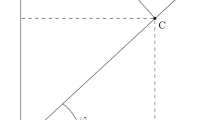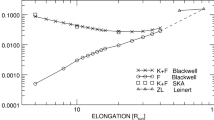Abstract
Polarized K-coronal brightness (pB) of the solar corona can be measured by taking four successive coronal brightness images through a linear polarizer, by turning it through four successive angles in intervals of \(45^{\circ}\) and using a standard formula to measure pB from the total coronal brightness (TB) that contains both the polarized K- and the unpolarized F-coronal brightness. The question is: will the time-dependent, highly dynamic corona illuminate each pixel with the same brightness during the time it takes to take the four successive images? To mitigate this problem we now have the polarization camera, in which, each super-pixel is made up of four sub-pixels, and built in to these four sub-pixels is a polarization mask that contains four linear polarizers orientated at four angles \(45^{\circ}\) apart. This allows the measurement of pB to be made in a single exposure. Here, the question is: will the variations of the coronal brightness in the four adjacent sub-pixels in a super-pixel be sufficiently negligible to assume that they observe the same part of the corona? This article looks for answers to these two questions by conducting two synthetic experiments to measure the electron temperature in the plane of the sky on a spherically asymmetric model (SAM) corona by first using a linear polarizer, and then replacing it with a polarization camera and use statistical analyses to determine how well the measured temperature matched the true temperature for the two cases.












Similar content being viewed by others
References
Billings, W.D.: 1966, A Guide to Solar Corona, Academic Press, New York.
Mann, I.: 1992, Astron. Astrophys. 261, 329. ADS .
Morgan, L., Habbal, S.R., Woo, R.: 2006, Solar Phys. 236, 263. ADS . DOI .
Reginald, N.L., Rastaetter, L.: 2019, Solar Phys. 294, 12. ADS . DOI .
Reginald, N.L., St. Cyr, O.C., Davila, J.M., Rabin D.m., Guhathakurta, M., Hassler, D.M.: 2009, Solar Phys. 260, 347. ADS . DOI .
Reginald, N.L., Davila, J.M., St. Cyr, O.C., Rastaetter, L.: 2014, Solar Phys. 289, 6. ADS . DOI .
Reginald, N.L., Davila, J.M., St. Cyr, O.C., Rabin, D.M.: 2017a, J. Geophys. Res. 122, 5856. DOI .
Reginald, N.L., Gopalswamy, N., Yashiro, S., Gong, Q., Guhathakurta, M.: 2017b, J. Astron. Telesc. Instrum. Syst. 3(1), 014001. ADS . DOI
Reginald, N.L., St. Cyr, O.C., Davila, J.M., Rastaetter, L., Török, T.: 2018, Solar Phys. 293, 82. ADS . DOI .
Török, T., Downs, C., Linker, J.A., Lionello, R., Titov, V.S., Mikić, Z., Riley, P., Caplan, M.R., Wijaya, J.: 2018, Astrophys. J. 856, 75. ADS . DOI .
Acknowledgements
We thank Predictive Science Inc. for sharing with us their Bastille Day CME model. The authors also thank the anonymous reviewer for the time and effort in identifying mistakes and useful suggestions to improve the manuscript.
Author information
Authors and Affiliations
Corresponding author
Ethics declarations
Disclosure of Potential Conflicts of Interest
The authors declare that they have no conflicts of interest.
Additional information
Publisher’s Note
Springer Nature remains neutral with regard to jurisdictional claims in published maps and institutional affiliations.
Appendices
Appendix A: Coronal Brightness Measurements Using a Linear Polarizer to Measure Electron Speed
In the filter-ratio technique to measure speed, first, for each line-of-sight, the temperature has to be determined first in order to measure the speed. This is because the temperature is a required input parameter to measure the speed. Therefore, it is imperative that the measured temperature be as accurate as possible or else the associated error would propagate into the speed measurements, which can easily be explained using Figure 13. Figure 13 shows the theoretically modeled plot of the speed-dependent–speed-sensitive brightness ratio (S-SSBR) given by \(B_{423.3}/B_{398.7}\) for four different temperatures (0.0, 1.0, 1.5, and 2.0) MK, and, for a line-of-sight crossing the plane of the sky at a coronal height of \(1.5\,\mathrm{R_{\odot}}\) from Sun center. The modeled S-SSBR is used to interpret the measured SSBR ratio at wavelength 423.3 nm and 398.7 nm on a pixel-by-pixel basis using the relevant S-SSBR plot that is associated with the measured temperature and the coronal height for that pixel. We assume that the true speed and temperature are \(300~\mbox{km}\,\mbox{s}^{-1}\) and 1 MK, respectively. Also, supposing that the temperature was measured to be 1 MK and SSBR was measured to be \({\approx}\,1.24\), from Figure 13 would give a measured speed of \(300~\mbox{km}\,\mbox{s}^{-1}\). Now, what if the temperature were erroneously measured to be 1.5 MK while SSBR was accurately measured to be 1.24? Then, using the speed interpretation linear plot for 1.5 MK in Figure 13 the speed would be measured to be \({\approx}\,500~\mbox{km}\,\mbox{s}^{-1}\), even though the SSBR was measured accurately. This translates to an error of \({\approx}\,40~\mbox{km}\,\mbox{s}^{-1}\) in speed measurement over an error of 0.1 MK in the temperature measurement.
Theoretically modeled speed-dependent–speed-sensitive brightness ratio (S-SSBR), which is used to interpret the measured SSBR shown in Figure 14 in terms of speed. Here, the modeled S-SSBR pertains to a line-of-sight crossing the plane of the sky at a coronal height of \(1.5\,\mathrm{R}_{\odot}\) from Sun center.
Figure 14 shows the measured SSBR (row 1, left), measured speed (row 1, right), true speed (row 2, left), and, the difference between the true and the measured speed (row 2, right). Figure 15 shows the histogram of the difference between the true and the measured speed shown in Figure 14 (row 2, right) with a bin size of \(5.0~\mbox{km}\,\mbox{s}^{-1}\). Here, we see that the percentage of data points measured to within \({\pm}\,25.0, {\pm}\,50.0~\mbox{km}\,\mbox{s}^{-1}\) of the true speed in the plane of the sky are 68.9\(\%\), 87.2\(\%\) out of a total of 5288 data points. The median in the histogram is \(7.5~\mbox{km}\,\mbox{s}^{-1}\) and the mode is in the \(5.0\mbox{ to }10.0~\mbox{km}\,\mbox{s}^{-1}\) range bin.
Measured speed-sensitive brightness ratio (SSBR) (row 1, left), true speed in the plane of the sky in the SAM corona (row 2, left), measured speed (row 1, right), and, the difference between the true and the measured speed in the plane of the sky (row 2, right). For easier comparison, the true and the measured speed images are shown with identical scales.
Histogram showing the magnitude of the difference between the true and measured speed in Figure 14 (row 2, right).
Appendix B: Calibrating the Coronal Brightness Modulation by the Atmosphere and Instrumental Optical Components
Here we assume that a ground-based filter-ratio experiment was conducted during a total solar eclipse or using a coronagraph to determine the coronal electron temperature. Let us assume the wavelength-dependent transmissivity of the intervening atmosphere between the source (corona) and the detector is \(A_{\lambda}\), the transmissivity through the optical components is \(O_{\lambda}\), which includes all of the mirrors and lenses in the telescope, linear polarizers, and, the quantum efficiency (the ratio of the number of photoelectrons released in a photoelectric process to the number of radiation quanta absorbed) of the detector, and the transmissivity of the color filters as \(F_{\lambda}\). Then the relationship between the measured terrestrial (TE) coronal brightness [\(B_{\lambda}^{ \mathrm{TE}}\)] and the true extra-terrestrial (EX) coronal brightness [\(B_{\lambda}^{\mathrm{EX}}\)] for two wavelengths [\(\lambda\)] 385.0 nm and 410.0 nm is shown in Equation 8. If the overall transmissivity is \(\alpha\), the ratio \(B_{ \mathrm{410.0~nm}}^{\mathrm{TE}}/B_{\mathrm{385.0~nm}}^{ \mathrm{TE}}\), corrected for \(\alpha\), gives \((B_{ \mathrm{410.0~nm}}^{\mathrm{TE}}/B_{\mathrm{385.0~nm}}^{\mathrm{TE}})/\alpha\), which is the measured TSBR that will be matched with the modeled T-TSBR for temperature interpretation. Using \(\alpha\) to correct \(B_{\mathrm{410.0~nm}}^{\mathrm{TE}}/B_{ \mathrm{385.0~nm}}^{\mathrm{TE}}\) both the measured TSBR and the modeled T-TSBR are reduced to a common extra-terrestrial environment. Here, \(B_{\lambda}^{\mathrm{TE}}\) is either tB or pB, measured using a linear polarizer or a polarization camera.
One way to measure \(\alpha\) is by first taking terrestrial solar-disk-brightness images [\(S_{\mathrm{410.0~nm}}^{\mathrm{TE}}\) and \(S_{\mathrm{385.0~nm}}^{\mathrm{TE}}\)] by allowing the solar disk brightness to pass through the same color filters [\(F_{\lambda}\)] and a suitable neutral density filter [\(\mathit{ND}_{\lambda}\)] or a pinhole. Use of a neutral density filter or a pinhole is necessary to prevent damage to the instrument and personal injury. The optical component that is not common between exposing the detector to the corona and to the solar-disk is the \(\mathit{ND}_{\lambda}\) filter. Now, the relationship between the terrestrial solar-disk brightness [\(S_{\lambda}^{\mathrm{TE}}\)] and the extra-terrestrial solar-disk brightness [\(S_{\lambda}^{\mathrm{EX}}\)] for the same two wavelengths at 385.0 nm and 410.0 nm are shown in Equation 9. The numerator of Equation 9, which measures \(\alpha\), is \(S_{\mathrm{410.0~nm}}^{\mathrm {TE}}/S_{\mathrm{385.0~nm}}^{\mathrm{TE}}\), which is measured by taking solar-disk images using \(F_{\lambda}\) and \(\mathit{ND}_{\lambda}\). The denominator of Equation 9, which measures \(\alpha\), is obtained by convolving with an extra-terrestrial solar-brightness spectrum \(S_{\mathrm{410.0~nm}}^{\mathrm{EX}}/S_{\mathrm{385.0~nm}}^{\mathrm{EX}}\) measured on the day of the experiment by other dedicated instruments with \(F_{\lambda}\) and \(\mathit{ND}_{\lambda}\). Examples include the Solar Spectral Irradiance Monitor (SIM), Solar Stellar Irradiance Comparison Experiment (SOLSTICE), and XUV Photometer System (XPS) instruments onboard the Solar Radiation and Climate Experiment (SORCE) mission. They collectively measure the solar-irradiance spectrum between 1 nm and 2400 nm at least once a day, and the data are available to researchers (see Rottman, 2005). The coronal- and solar-brightness terms in Equation 8 and Equation 9 are per unit time.
The above technique to measure \(\alpha\) was implemented during the filter-ratio experiment to measure electron temperature in the low solar corona was conducted in conjunction with the total solar eclipses of 29 March 2006 in Libya and 1 August 2008 in China and the results are presented in Reginald et al. (2009, 2017a). In these two ground experiments two broadband filters centered at 410.0 nm and 385.0 nm, were used but, instead of a \(\mathit{ND}_{\lambda}\) filter, a pinhole was used to expose the telescope directly to the solar disk to measure \(S_{\mathrm{410.0~nm}}^{\mathrm{TE}}\) and \(S_{\mathrm{385.0~nm}}^{\mathrm{TE}}\). The same technique can be implemented to measure \(\alpha\) related to filter-ratio experiment to measure electron speed using two broadband filters centered at wavelengths 398.7 nm and 423.3 nm. We have
Rights and permissions
About this article
Cite this article
Reginald, N., Newmark, J. & Rastaetter, L. Measuring Electron Temperature Using a Linear Polarizer Versus a Polarization Camera. Sol Phys 294, 100 (2019). https://doi.org/10.1007/s11207-019-1491-x
Received:
Accepted:
Published:
DOI: https://doi.org/10.1007/s11207-019-1491-x







